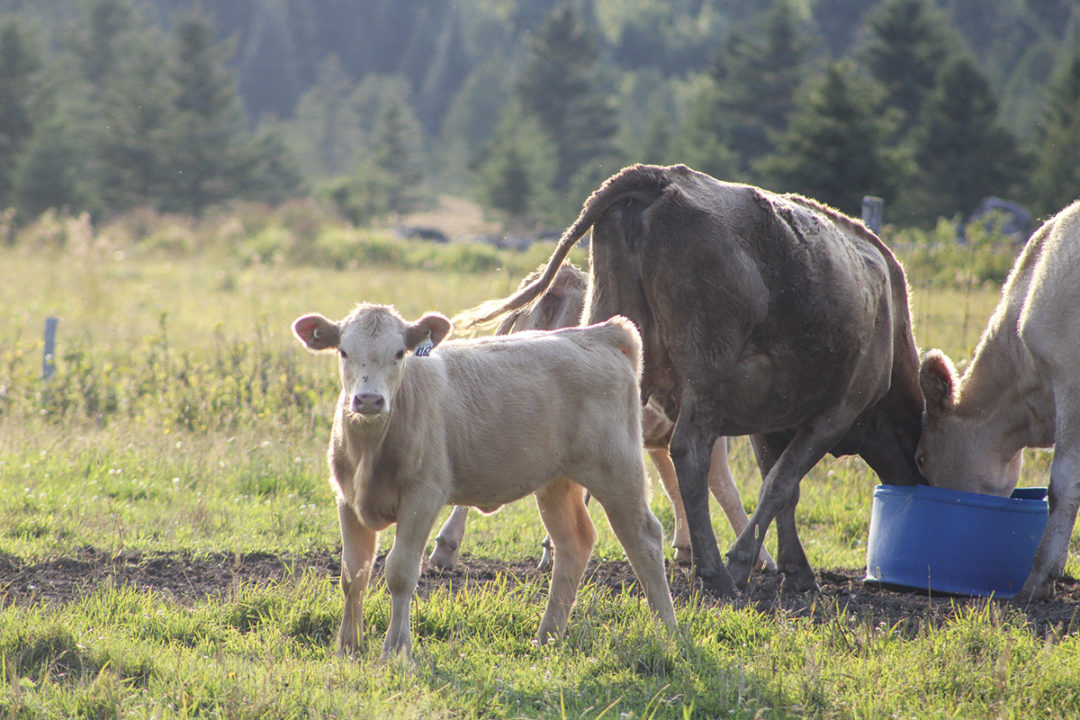Every cow and calf in your herd is a representation of hard work and calculated management decisions. Each new generation has the ability to demonstrate progress and serve as a building block for future performance and profitability. How can you make the most of each calf crop? Trace mineral nutrition has a generational impact that can be seen from cow to calf, generation after generation. Are you leveraging your herd’s trace mineral nutrition for the best outcome?
An inadequate trace mineral strategy hinders your herd’s ability to be productive and decreases each generation’s ability to perform. Generational nutrition is the impact that nutrition has on the fetus during gestation. Calves experience a pull-through response from the cow, so poor nutrition in the cow will set a calf back before it is even born. Poor trace mineral nutrition undermines the work you’ve put in to build your herd and sets the stage for a cycle that decreases profitability year after year.
Don’t hold your cows back
Trace minerals are critical to multiple biological functions within the cow, including:
- Zinc: Plays key roles in over 300 enzyme systems, including antioxidant systems and maintaining epithelial integrity (skin and other tissues).
- Copper: Crucial for proper estrus cycles and connective tissue development.
- Manganese: Critical to fetal development. A manganese deficiency leads to dwarfed, underdeveloped calves.
Without proper trace mineral supplementation, cows will struggle to meet reproductive goals. This can result in more open cows – due to silent or irregular estrus – lower conception rates and decreased early pregnancy retention. Additionally, cows have a weaker skin barrier, which makes them more susceptible to immune and hoof issues. A higher prevalence of foot rot and lameness events leads to decreased mobility, decreased intake and a failure to maintain proper body condition.
Poor trace mineral nutrition is an obstacle to the cow that can be seen in the calf. Calves will be slower-growing and more susceptible to immune challenges if they receive poor-quality colostrum and less milk. Additionally, immune challenges are harder to combat and tap into nutritional resources that should be contributing to growth. Calves born to undernourished cows will be playing catch-up from their first day of life onward. When these calves make up most of your calf crop, it is reflected in the bottom line.
With these obstacles to cows and calves, your herd will make slower progress. Cows will not be producing the quality progeny they are genetically capable of producing, and because their calves will be playing catch-up, the pool of replacement heifers will also be limited. Without intervention, this cycle can keep repeating and stand in the way of your ability to advance herd quality.
The right nutrition for herd advancement
How can you prevent or break this cycle? Prioritize a trace mineral strategy that carries through each generation and allows you to keep building the quality of your herd. When cows are receiving the correct amount of high-quality metal amino acid complex trace minerals, they raise calves that thrive.
Trace minerals are critical for reproduction and, when fed correctly, they can improve conception rates by up to 20%. Proven trace minerals, such as metal amino acid complexes, increase the quantity and quality of oocytes available each cycle and improve embryo survivability during the first 45 days of gestation, which is when the majority of pregnancy loss occurs. This reproductive efficiency also can tighten the calving window up to 16 days.
Heifer calves born to cows supplemented with metal amino acid complexes can reach puberty up to 19 days earlier, giving you a larger pool of cycling heifers from which to choose replacements. A bigger replacement pool gives you the opportunity to focus on additional genetic criteria or observable traits, such as docility, that can further improve the foundation of your herd. When replacement heifers receive metal amino acid complexes during development, more of them retain pregnancies from days 17 to 60 following artificial insemination.
Feeding metal amino acid complexes also contributes to a more robust immune system and stronger skin, hoof and digestive tract barriers, making it easier to overcome immune challenges and experience 30% less foot rot. Supplemented cows also produce better colostrum with up to 28% higher immunoglobulin (IgG) concentration, positioning calves to be more resilient in the face of immune challenges. These healthier calves can wean to their full genetic potential, and research shows herds feeding metal amino acid complexes generate calves that, on average, are 28 pounds heavier. Collectively, the benefits of a proven trace mineral program can increase your profitability and open the door for more rapid advancement and improved performance in your herd.
Implementing a trace mineral program
To capitalize on these benefits, evaluate your herd’s nutrition to make sure a proven, organic trace mineral program is built in. Pause to ask these questions, consider your goals and decide what importance the next calf crop holds.
- Do I want to retain replacement females?
- Do I want a better generation of heifers?
- Do I need to sell the calves at heavier weaning weights?
- Do I want less immune stress if retaining ownership?
- What benefits are most crucial to my program? What strategy fits best with my setup?
Trace minerals are only one piece of the puzzle but are a deciding factor in how much of your herd’s genetic potential can be captured. Work with your nutritionist to incorporate metal amino acid complexes into a year-round supplementation program. Implementing a trace mineral strategy does not have to be intimidating; trace minerals offer flexibility and can be incorporated as loose minerals, into TMRs, blocks and lick tubs.
Cows and calves are the building blocks for your herd, and feeding high-quality trace minerals year-round helps them perform to their maximum potential. Make the most of your effort and investment by positioning your herd to improve year after year with high-quality trace mineral nutrition.









